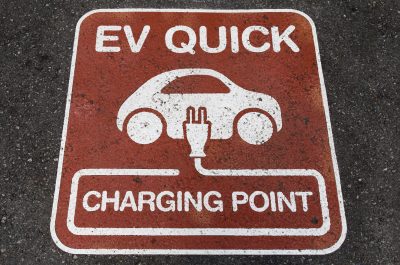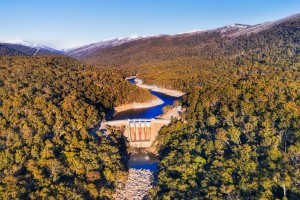Formula for the Energy Transition? Final Rate of Return Ruling Unpacked
Danish Physicist Niels Bohr is sometimes credited with the observation that predictions are difficult to make, especially about the future. Every four years the Australian Energy Regulator is given the challenging job of putting in place ways of estimating the cost of financing about $100 bn of network infrastructure up to nine years into the future. In a final rate of return ruling last week, set amid the accelerating energy transition, the regulator has opted for minimal changes to its current approach. The results of this review, developed over a two-year process, is one of the most consequential regulatory settings in the Australian energy framework. What has been decided – and what does this mean for customers and the future?
Last week saw the determination of arguably one of the energy sector’s most ‘hidden’ settings – one which will exert a key influence on the grid’s energy transition over the next decade.
The AER’s Rate of Return Instrument review determines the level of the allowed returns on more than $100 billion of energy network infrastructure across Australia. In turn, the decisions made in the Instrument influence the single largest component of most network charges and seek to provide the right incentives for network investment and use over the decades ahead.
Shaping the energy system of the future
Getting the market signals right represents a critical issue for customers and the community – particularly at a time of rapid energy transition.
The real-world results that will flow from applying the AER’s Rate of Return Instrument will affect almost every energy customer across eastern Australia.[i] Indirectly, these signals shape how the energy system evolves through time and influence countless network and customer investment decisions made daily across the economy.
The AER decision was made over a long and challenging period of uncertainty, highlighting the need for adaptability over time. As an example, the review commenced during a period of historically low bond rates – one of the key building blocks of the rate of return estimate – and concluded following a rapid rise in rates to more historically normal levels.
Through the review the AER heard from a range of stakeholders, including a dedicated consumer reference group, Australian and global infrastructure investors, groups representing renewable energy proponents, as well as major energy users.
Continuity of approach chosen
The AER’s final rate of return broadly delivered a high level of continuity in the current climate
The rate of return is a weighted average of the estimated costs of debt and equity and stability was evident in each component.
Over the past several years the AER has collected actual network debt costs. Based on looking at this data, the AER has opted to continue with the current approach of estimating a benchmark investment grade cost of debt and continuing with the ‘trailing average’ approach. This 10-year trailing average approach has the benefit of smoothing out changes in cost of debt allowances – reducing volatility. It also matches the kinds of longer-term financing typically relied on by network businesses.
In setting the estimated cost of equity, the AER has chosen to maintain its existing methods. While it considered alternative models used by some other regulators and examined industry proposals for a greater role for such forward-looking models, it has opted to not change from current practice.
This means the cost of equity will continue to be set largely on the basis of long-term historical data on risk premiums and current bond rates. After considerable expert debate on the topic, the AER has not proceeded with earlier proposals to alter the ‘term’ (or length) of the bond rates underpinning the cost of equity estimate. The final position reached is consistent with most other regulators of long-term infrastructure.
As a result of an updating of its estimate of the risk premium taking into account data to the end of 2022, the AER’s assessed cost of equity will on average rise slightly from the 2018 settings. Overall, however, the cost of equity estimate will continue to rise and fall in line with long-term bond rates to reflect expected changes in financing costs.
Continuity of another kind was also present.
While industry-wide rate of return reviews have occurred since 2009, this review was the first time a rate of return review was completed under the same framework as its predecessor.
Looking to the horizon – future issues to be considered
Under the framework, the Rate of Return Instrument is scheduled to be reviewed by December 2026. Some issues, however, are likely to require further work in the interim.
With the delisting of two significant listed energy network firms, past approaches to assessing the riskiness (or ‘beta’) of the benchmark regulated firm will need to change as there are no longer any directly comparable publicly listed networks to measure against. This is a major setting in the framework, which will require careful consideration and, potentially, international learnings from other regulators facing the same issue.
Another issue for the future may be whether greater use can be made of more forward-looking models (such as the commonly used Dividend Growth Model) than currently.
A question which may also be worth asking is whether there are other opportunities in the rate of return settings that would deliver greater stability or reduced volatility in network charges. In debt, this has already occurred, however, there may be more that can be done that customers and investors might ultimately value.
Yet in the context of a review which started in an environment of historically low rates, and finished in a period of historically high inflation, caution is warranted. Wisely, the AER has recognised this fact, by undertaking forward-looking scenario analysis on how its decision might perform under some plausible future conditions.
While many futures are possible, we will only see one of them. This just reinforces that all those involved in the review will be keenly watching for lessons on how this sometimes-hidden setting will perform in this critical decade head for the energy transition.
[i] The AER Instrument applies to all networks except those in Western Australia, where a separate set of determinations cover electricity and gas networks. The WA Economic Regulation Authority also recently made its equivalent determination on the same issues for gas networks and transmission pipelines.




